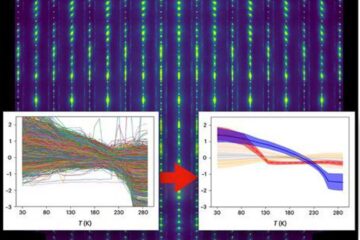Changes in urine could lead to BSE test for live animals

Publishing their findings in BioMed Central’s open access journal Proteome Science, the scientists hope that their discovery might lead to the development of a urine-based test that could prevent the precautionary slaughter of many animals as now occurs when the disease is detected.
The discovery of a new human variant of Creutzfeldt-Jakob Disease (vCJD), thought to be transmitted to humans via BSE-infected products, has resulted in many countries instituting extensive BSE testing programs for older animals. Diagnostic testing currently involves the detection of a misfolded “infectious” protein, or prion, in post-mortem brain tissue.
BSE has caused significant changes in the way beef products are produced and traded. If a simple and accurate urine test can be developed from this new knowledge, it could be performed on live animals and therefore may provide an alternative to current BSE surveillance procedures. It could also allow for the assessment of the health of breeding stock where post-mortem testing is not an option.
“We are hopeful that the knowledge that we’ve gained from this study will eventually lead to a live test,” says Dr. David Knox, a researcher at the Public Health Agency of Canada’s National Microbiology Laboratory in Winnipeg. “It may be possible to develop similar tests for other species as well, including humans with Creutzfeldt Jakob disease (CJD). A urine test for CJD could assist doctors to narrow down potential diagnoses for people with dementia”.
Knox led a team of researchers who have demonstrated that the “protein profile” of cattle urine samples can indicate the presence of a BSE infection as well as how far the disease has advanced. The scientists analysed the proteins in urine samples taken from four infected and four healthy cows of the same age over the course of the disease. The proteins from the healthy and infected samples were compared using a technique called two-dimensional differential-gel electrophoresis (2-D DIGETM)
In these preliminary results a single protein was able to distinguish between those infected and control animals. In addition, the relative abundance of a set of proteins could accurately determine how far the disease had advanced.
“Our work shows that it is possible to identify biomarkers in urine that could be useful in the diagnosis and monitoring of disease progression in BSE and related transmissible spongiform encephalopathies,” says Knox.
Media Contact
More Information:
http://www.biomedcentral.com/All latest news from the category: Life Sciences and Chemistry
Articles and reports from the Life Sciences and chemistry area deal with applied and basic research into modern biology, chemistry and human medicine.
Valuable information can be found on a range of life sciences fields including bacteriology, biochemistry, bionics, bioinformatics, biophysics, biotechnology, genetics, geobotany, human biology, marine biology, microbiology, molecular biology, cellular biology, zoology, bioinorganic chemistry, microchemistry and environmental chemistry.
Newest articles

Machine learning algorithm reveals long-theorized glass phase in crystal
Scientists have found evidence of an elusive, glassy phase of matter that emerges when a crystal’s perfect internal pattern is disrupted. X-ray technology and machine learning converge to shed light…

Mapping plant functional diversity from space
HKU ecologists revolutionize ecosystem monitoring with novel field-satellite integration. An international team of researchers, led by Professor Jin WU from the School of Biological Sciences at The University of Hong…

Inverters with constant full load capability
…enable an increase in the performance of electric drives. Overheating components significantly limit the performance of drivetrains in electric vehicles. Inverters in particular are subject to a high thermal load,…





















